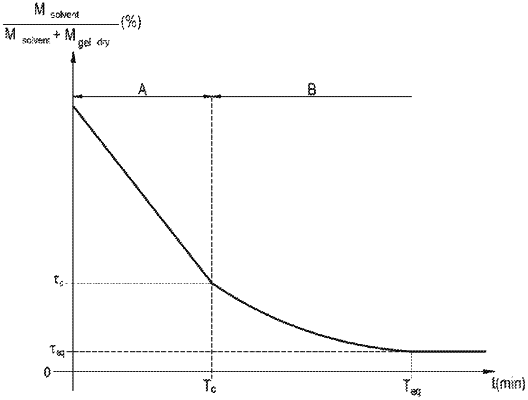| CPC C08J 9/36 (2013.01) [B81C 1/00206 (2013.01); C08J 7/04 (2013.01); C08J 9/365 (2013.01); C12N 11/089 (2020.01); C12N 11/098 (2020.01); B82Y 30/00 (2013.01); B82Y 40/00 (2013.01); C08J 2205/022 (2013.01); C08J 2205/042 (2013.01); C08J 2205/10 (2013.01); C08J 2333/26 (2013.01); C08J 2389/00 (2013.01)] | 10 Claims |

|
1. A method of depositing nano-objects on the surface of a gel with uniform rigidity, said method comprising:
a) providing a gel comprising a polymer matrix and a solvent within the polymer matrix, the polymer matrix forming a three-dimensional network capable of swelling in the presence of said solvent, where the solubility of the polymer matrix at 1 bar and 25° C. in the solvent is less than 1 g/l, and having rigidity values measured by atomic force microscopy on n points distributed over the entire surface of the gel that follow ±10% a symmetrical distribution, provided that the arithmetic mean and median of said distribution have a deviation e as defined in formula (III):
 wherein e is less than 10% and is measured by atomic force microscopy, the variability of the rigidity value at the centimeter scale being less than 20%, then
b) depositing nano-objects on the surface of the gel, said nano-objects having an average diameter greater than or equal to the average diameter of the pores of the gel, then
c) evaporating the solvent from the gel at least until it reaches an equilibrium evaporation rate at an equilibrium time Teq beyond which the gel can no longer be dried, said rate of evaporation of the solvent decreasing until is reaches said equilibrium evaporation rate, provided that at the start of evaporation the content of inorganic salts in the solvent is less than 6 g/l.
|